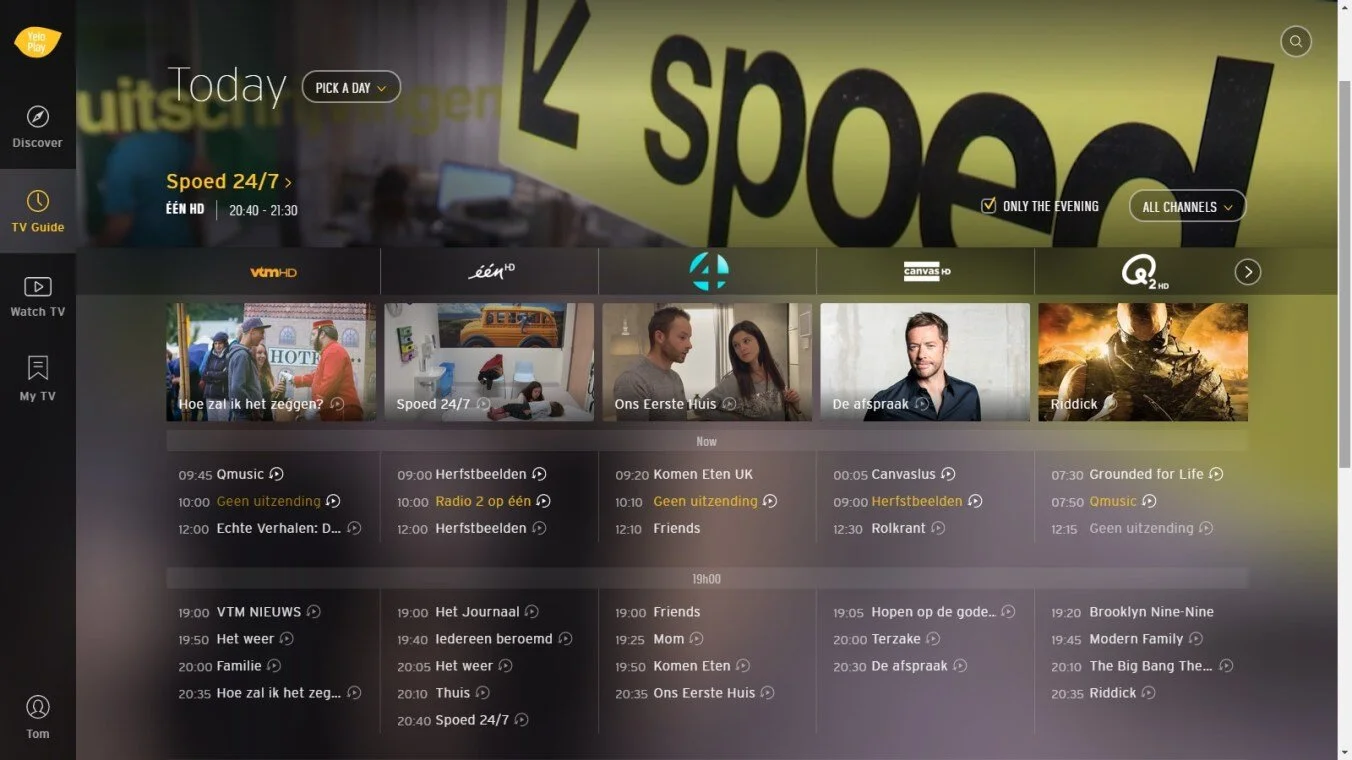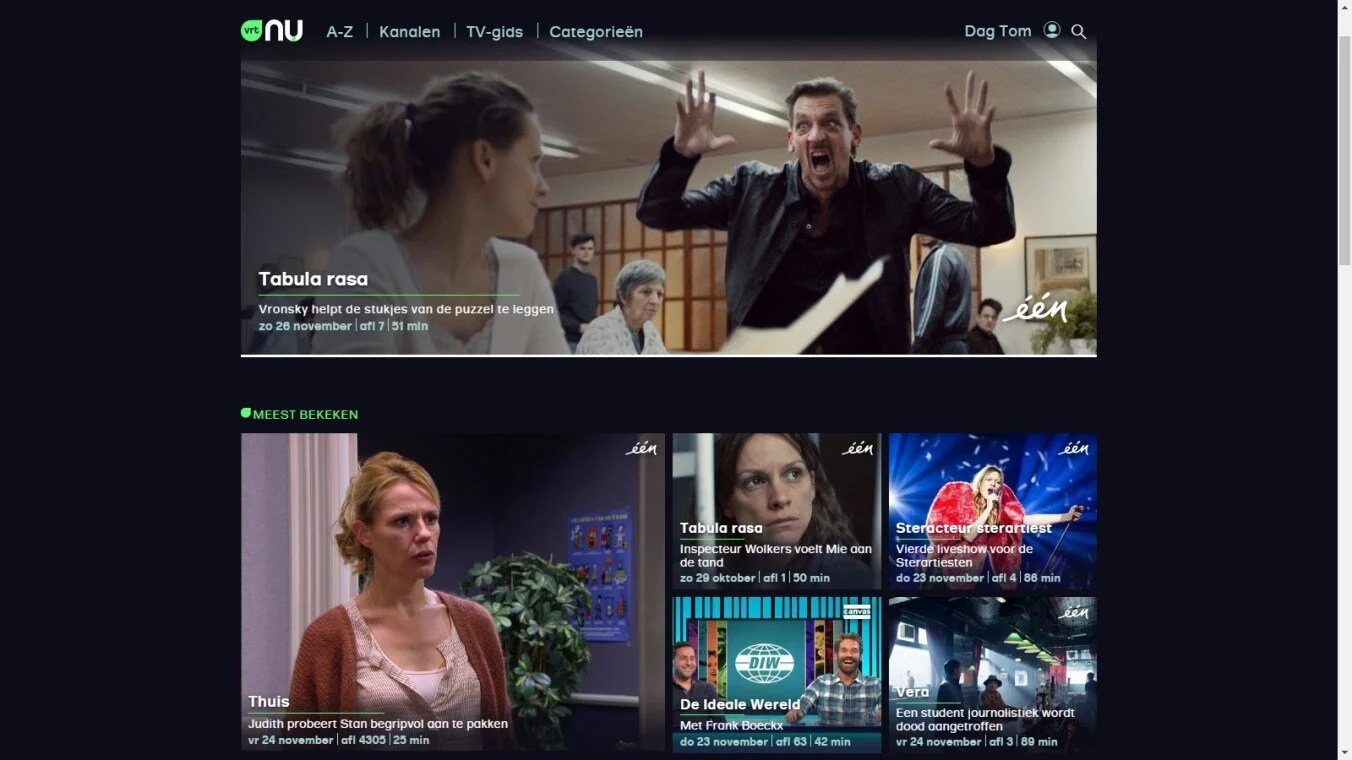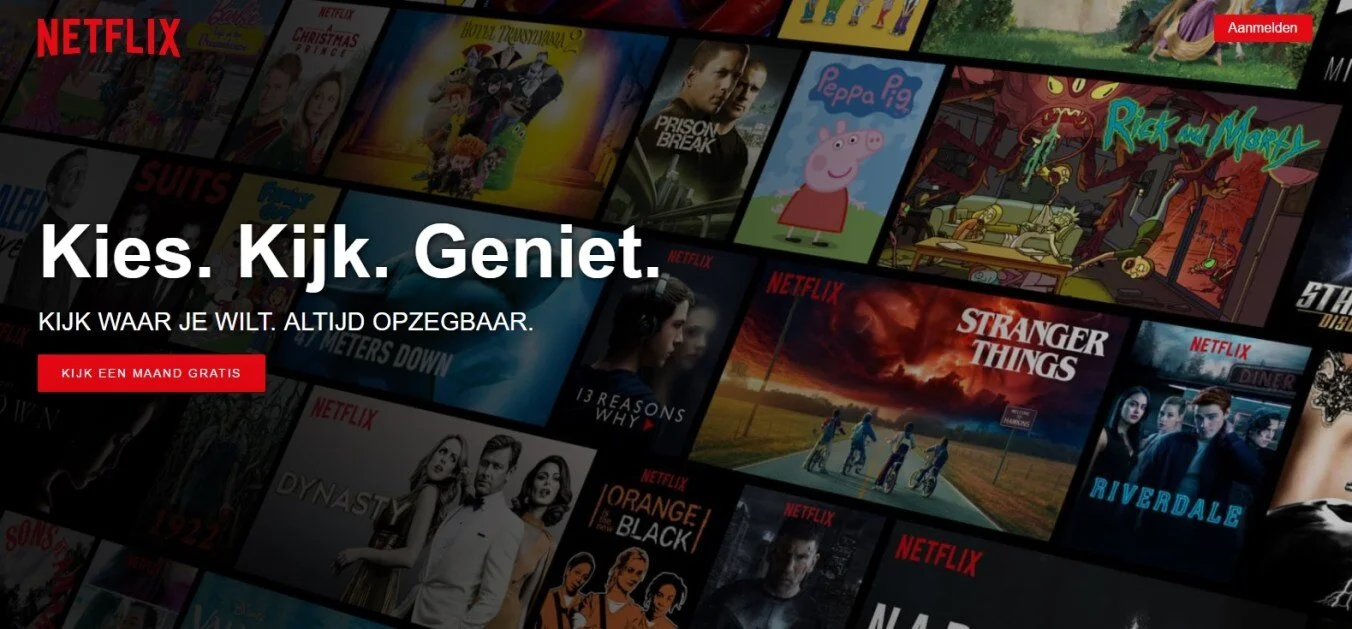Belgium
Contributed by Tom Evens (Ghent University)
December 2017
Key Takeaways
Rather than competing with other SVOD services, Netflix has to deal with the long-standing dominance of cable and telecom operators, which successfully bundle cable TV access with internet, telephony and mobile services.
High-performing broadband infrastructure may spur the rapid penetration of internet-distributed television, although highly-priced broadband plans might hamper adoption.
Locally-produced programming is key to winning market share in the Belgian market. If Netflix wants to break further into the market, it will need to consider Dutch-language productions.
Netflix may be forced to contribute to the financing of locally-produced programming, which it needs anyway to become more successful.
Market
Netflix launched service in Belgium on 19th September 2014. The service had already been available in other European countries including the UK, Ireland, Denmark, Finland, Norway and Sweden since 2012, and in the Netherlands since 2013. In the same week as the Belgian market introduction, Netflix went live in Germany, France, Austria and Switzerland too. The main reason for Netflix’s late availability in Belgium probably is the country’s complicated state structure. Due to the highly complex political structure, the country is divided into different language communities. The largest region, in the northern, Dutch-speaking part of Belgium, is Flanders, with approximately 6.5 million inhabitants. Some 4.5 million French-speaking Belgians live in Wallonia, the southern part. The cultural and linguistic diversity in Belgium has resulted in a segmented landscape along the lines of the different language communities. It its therefore difficult to speak of a unified Belgian media market. It was only after copyright licenses to the Dutch-language and French-language productions had been obtained that Netflix became ripe for a Belgian market introduction.
Except for Stievie and Plush, operating in the North and South respectively, the market was characterised by absence of any internet-distributed service. Stievie, a rare partnership between public service broadcaster VRT and commercial broadcasters Medialaan and SBS Belgium, started in 2013 offering live and on-demand access to 11 popular television channels (€9.99 per month). The broadcasters aimed to provide an alternative to cable TV and to secure their place in internet-distributed television. Launched in the same year, Plush.be operates as an SVOD and TVOD service. It gives access to an à la carte catalogue (€1.99 per movie), or a basic subscription service gives access to a large catalogue of movies that can be played on any connected device (€9.95 per month). Moreover Plush.be provides unlimited access to some 200 adult movies (€19.95 per month). In 2012, the first independent internet-distributed operator WeePeeTV had come into the market providing access to 5 linear channels and 10 flexible channels on all internet-connected devices (€12 per month). Another service worth mentioning is Bhaalu, which, much like its American counterpart Aereo, enabled consumers to store recorded television shows in the cloud (for a monthly fee of €5). Except for Plush.be, all services mentioned focused on linear television and did not include a VOD library. By the time Netflix came into the market, both WeePeeTV and Bhaalu had however become defunct: The former due to lack of consumer demand, the latter after losing a legal case on copyright infringement. In November 2017, Amazon announced its introduction to the Belgian market.
Rather than competing other SVOD services, Netflix had to deal with the long-standing dominance of MVPDs: About 90 percent of the Belgian population subscribes to a pay-TV service. Since the 1960s, cable has replaced terrestrial as the dominant mode of TV distribution. As a result of a historically ‘convenience monopoly’, cable operators had sole access to the residential distribution market and were able to build a powerful position. Only recently, this monopoly was challenged by the introduction of new digital platforms. Belgian-wide telecom incumbent Belgacom (now rebranded Proximus) became a serious challenger and now controls about 36 percent of the market. Region-based cable operators Telenet and Voo control 48.5 and 14 percent of the Belgian MVPD market respectively. Aside from their traditional offerings, MVPDs offer TV Everywhere services that enhance subscribers’ access to live and on-demand programming. Telenet’s Yelo Play, Proximus TV Replay and Voo Motion are regularly used. Cord cutting is, at least for the moment, no issue in Belgium: Only 2 percent have SVOD and no pay-TV; about one-third of all MVPD customers combines traditional pay-TV with SVOD. In a similar vein, the impact of cord shaving is moderate: MVPDs bet on expanded VOD libraries to compete with Netflix. Pay-TV services are generally bundled with internet, telephony and mobile services as part of a triple/quadruple play strategy.
In addition to the strong position of MVPDs, the Belgian market is characterised by strong performance of TV broadcasters. Although live viewing is in decline, broadcasting programming remains an important part of total viewing: Broadcaster original content commands about 70 percent of all minutes spent viewing video. Live television accounts for 45 percent of total viewing; recorded time-shifted viewing accounts for about 26 percent and free catch-up services operated by broadcasters make up another 1 percent. Broadcasters have launched portals that give free access to live and on-demand broadcasting content, provided that consumers register themselves on the website. Public service broadcaster VRT launched its free video player VRT NU; RTBF has a similar service in the south: Auvio. In the North, commercial broadcaster Medialaan started to offer all its programming freely on its website for registered viewers; competitor SBS Belgium followed suit. In the South, TV-Replay bundles the French channels whereas RTL-TVI offers catch-up from its website.
Another distinguishing feature of the Belgian market is the importance of locally-produced content. Especially in the North, domestic drama series enjoy a huge popularity drawing the highest audiences of all programming. Domestic series are among the most popular programmes in terms of viewing ratings (both live and on-demand). In 2016, for example, four of the ten most popular programmes were local series, one down from the year before. Both public service and commercial channels heavily invest in local production. Despite the difficulties of overcoming the limited scale and financing typical of small markets, the production sector has experienced rapid growth and full professionalization. The popularity of local content has severe implications for commercial strategies in the sense that local content is considered a must-have for being successful in the market. Cable operator Telenet, owned by cable giant Liberty Global, started to invest more than €4 million in original series and movies each year, adding extra money to the local production sector. In 2016, Telenet announced its first commissioned series Chaussee d’Amour, which first ran on its purely subscriber funded channels Play/Play More. As distribution platforms try to differentiate with local content, the question remains to what extent Netflix will need local programming to conquer the Belgian market. After sealing licensing contracts for local programmes and series, Netflix announced its first original Dutch-language crime series Undercover, which will be produced in a partnership with public broadcaster VRT, in November 2017. After the series will be shown by VRT, Netflix will distribute it worldwide.
Regulation
Because of its complicated state structure, regulation for media and communication services in Belgium is fragmented. Enforcement of the media legislation rests with the regional media regulators Vlaamse Media Regulator (VRM) in the North and Conseil Supérieur de l’Audiovisuel (CSA) in the South. On the federal level, the Belgian Institute for Postal Services and Telecommunications (BIPT) regulates electronic communications (telephony, internet, digital television) and guarantees competition in the market. Put briefly, the regional level is responsible for the regulation of the content whereas the federal level is responsible for the regulation of the technical distribution. The Parliament implements European directives such as the Audiovisual Media Services directive and the Satellite and Cable directive into community law. Unlike linear TV, on-demand services remain largely unregulated under the existing regulatory frameworks. Under the upcoming revision of the Audiovisual Media Services directive, expected in 2018, Netflix may be required to adopt local content quotes and could be forced to include at least 20 percent of their catalogues to European film and TV productions.
Furthermore, the new regulatory framework will allow policymakers of European member states to tax on-demand services so as to create incentives for sustainable production of local programming. At the moment of writing this country report, the Flemish Government is investigating how on-demand services can be enforced to invest in local audiovisual productions. This would bring services such as Netflix and Amazon on par with traditional MVPDs Telenet and Proximus, which are subject to the so-called ‘Stimulation Decree’. Under this decree, introduced in 2014, providers of paid-for TV services are obliged to participate in the financing of domestic movies or drama series. The decree stipulates further that such services have to contribute €1.3 per subscriber, with a maximum contribution of €3 million annually. This can be done either via a contribution to the Media Fund, which supports the financing of drama series, or via participating directly into a project as a co-producer. Hence, there is a possibility that Netflix and other on-demand services will be obliged to contribute to the financing of locally-produced programming.
Viewing habits
Unlike neighbouring country the Netherlands, the uptake and popularity of SVOD services, and Netflix in particular, is relatively low. About one-third of the Belgian population has access to an SVOD service, but only one fifth buys a continuous subscription. The Belgian market for internet-distributed television is clearly dominated by Netflix, which has a market penetration of about 21 percent. Smaller services include sports packages (Eleven), arthouse cinema (Dalton) or drama series (Lumière), which appeal to specific niches and help to create diversity in the market. Most Belgian households tend to subscribe to one particular service; about one third subscribes to two or more on-demand services. However, people are hardly cancelling their traditional pay-TV subscription, which suggests that SVOD and traditional pay-TV services are considered complementary. The low degree of cord cutting is possibly due to the relatively low prices for basic TV packages (> 300 channels), which are often sold as part of convenience bundles. Such bundles (TV, Internet, telephony) are hardly more expensive than standalone superfast internet. Netflix has been integrated in the Proximus set-top box since late 2014; Telenet has announced that it will integrate the SVOD service in its offering too.
Generally, SVOD subscribers spend more time to viewing TV programming than non-SVOD subscribers. Although scheduled programming is slightly in decline, growth in on-demand viewing offsets the decline in linear viewing. More often than not on-demand viewing concerns broadcaster original content that is consumed on other services and/or connected devices. Free online video platforms such as YouTube, Facebook, Vimeo and Dailymotion are growing quickly, and often involve short form clips and music videos. Whereas SVOD commands 6 percent of all time spent viewing (20 minutes per day), free online video services account for 16 percent (52 minutes per day). Increasingly, long form content is watched via mobile devices: Whereas tablets are stabilising and even in decline, the smartphone has become the prime device for youngsters to consume TV content, even in long-form format. Netflix is particularly popular among the 18-34s, for whom Netflix usage is double that of all adults. Moreover, as the majority of viewing among 18-34s is live or time-shifted this confirms the hypothesis that conventional TV programming and SVOD services are complementary.
Internet Pricing and Availability
Although there is a de facto duopoly of Telenet/Voo (cable, regional networks) and Proximus (copper, nation-wide network) in the Belgian market for broadband infrastructure, all network operators have been investing heavily and frequently in their networks to develop one of the best performing European countries in terms of broadband penetration and loading speeds. Both copper and cable operators were subject to universal service obligations and had a responsibility to ensure connectivity via their technical infrastructure. This probably explains best why Belgium has not one, but two high-quality broadband networks. As of 2017, coverage of fixed broadband internet (> 30Mbs) is guaranteed to 99.5 percent of the Belgian population; about 85 percent of the Belgian households subscribes to a fixed broadband subscription. 43 percent even subscribes to a >100Mbs broadband networks. 4G coverage is 94.5 percent for Belgian mobile consumers; 68 percent has a mobile broadband subscription.
Critics often insist that the duopolistic market situation is driving up broadband prices. Hence, there is a lively debate about whether Belgian households are worse off than their European counterparts. As telecom regulator BIPT found prices in the Belgian market too high compared to neighbouring countries, it regulated the broadband market and called Proximus, Telenet and Voo to open up their networks to alternative operators. The latter contest this form of regulation by arguing the cost for the cheapest standalone broadband plan is about €25, which is substantially below EU average. However, BIPT argues such cheap standalone plans are not representative as Belgian households increasingly subscribe to service bundles comprising broadband internet, telephony (fixed and mobile) and digital TV. Subscription to such bundles has an average cost of around €68, which is said to be significantly higher than in neighbouring countries.
Content
Netflix launched in Belgium with a considerably smaller catalogue than in other, especially English-language countries. Due to the late entry of Netflix in Belgium, many tech-savvy users, who were keen to become a Netflix customer, had already managed to subscribe to the American or British service. The limited supply was then one important reason why many of these subscribers still remained with an international account and resisted to switch to the Belgian service. The catalogue was gradually enlarged, still significant differences with other markets continue to exist. In June 2016, two years after Netflix’s launch, the Belgian catalogue consisted of 1982 videos (1561 movies and 421 series), which was remarkably lower than in the United States (5183 videos), Canada (3452 videos) and the United Kingdom (3039 videos). In May 2017, the Netflix catalogue contained 1928 items (1532 movies and 396 series).
One of the main problems Netflix suffered from in the beginning was a lack of local programming, which seems crucial to win market share in the Belgian market and especially in the northern part. Although Netflix has secured deals with local producers later and is now co-producing a Dutch-language crime series, chances are likely locally-produced programming will never be one of its selling propositions in such a small market. Furthermore, cable operator Telenet was able to renew its agreements with HBO, Disney and Warner Bros so that Netflix’s subscribers were deprived from many top series and latest movies. Even Lilyhammer, a Norwegian-American series starring Steve Van Zandt that was Netflix’s first co-production in Europe, was absent since the series were then broadcast by public service channel Canvas. House of Cards and Orange is the New Black proved to be the most popular programmes in the beginning; New Girl has become the most viewed series on Netflix in Belgium ever.
Consumer and Press Reaction
Already months in advance, newspapers speculated about Netflix’s arrival to the Belgian market. It is no wonder that Netflix’s launch in Belgium was probably the most mediated media event of 2014. Its entry was initially met with scepticism. Broadcasters joined MVPDS in their critique of the limited catalogue, which lacked a large offer of locally-produced programmes – in fact, industry consensus had grown that keeping domestic programming off from the Netflix service would enhance, not hamper, the sustainable development of the local production system. However, it would not take that long before producers and broadcasters sold licenses to Netflix, which also allied with MVPDs to be integrated in the set-top box.
A study into Netflix’s medium-term market potential performed prior to the service’s launch revealed that about 28 percent of households were interested in subscribing to Netflix. Flexibility and ease of use were found to be crucial benefits; future subscribers also valued a broad catalogue. Unlike common belief, lack of locally-produced programming did not impede the smooth uptake of Netflix. In addition to the Belgian subscribers that remained with their international account, penetration was also hampered by subscribers sharing accounts with friends and families. Despite the fact that penetration in Belgium is lower than in the Netherlands or the Nordics, it seems that Netflix has established itself as a prominent actor in the Belgian audiovisual landscape and the leading portal in internet-distributed television.
Subscriber Estimates
Three years after Netflix’s launch, market penetration of the service is 21 percent (20 percent in the Northern, 22 percent in the Southern). This would bring the total number of Netflix subscribers in Belgium to about 220,000.[1]
Local Netflix Office
Netflix does not have a Belgian office. It operates the Benelux markets (Belgium, the Netherlands and Luxembourg) from its regional office in Amsterdam, Holland.
Notes
[1] Thanks to Bart Vanhaelewyn and imec.digimeter for data on viewing patterns and technology ownership.



